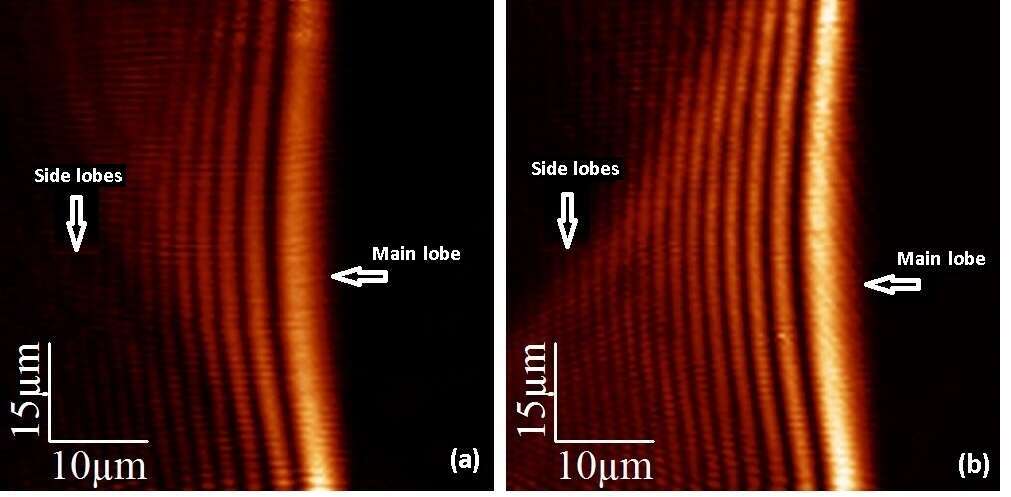
Compensating Plasmonic Losses with Infinite Energy Beams
While surface-plasmons exhibit unique and attractive properties such as high-spatial confinement and enhancement of the optical field, they also suffer from inherent ohmic losses. The latter is probably the most pronounced fundamental challenge in the field of plasmonics and a true bottle-neck for many applications and industrial implementation. For this reason there has been an increased scientific interest in recent years, to find new ways to overcome this loss issue in plasmonic systems. These include the use of various gain media, lasing, novel hybrid wave-guiding with decreased losses, and more. Recently, it was suggested and demonstrated that free-space self-accelerating beams, i.e. – multiple-lobed, non-diffracting curved beams, can be used in order to compensate for absorption losses of the beam’s main lobe by enhancing the energy of its side-lobes [1, 2]. It was suggested that this solution may enable to compensate for plasmonic losses as well.
In this work, we demonstrate both numerically and experimentally, the first realization of the above-mentioned concept with surface-plasmons waves. We further extend the concept beyond self-accelerating beams, into non-diffracting beams that propagate along straight trajectories which are more suitable for on-chip communication, waveguide coupling and nanotechnology applications. As an example, Fig.1 shows experimental measurements of (a) a regular self-accelerating plasmonic Airy beam, exhibiting decay of the main`s lobe intensity and (b) a loss-compensated Airy-beam, in which the intensity of the main lobe is preserved (Fig.1(b)).

Fig.1: Experimental measurement of the intensity distribution of (a) a regular and (b) a loss-compensated plasmonic self-accelerating Airy beam.
By extending the propagation length of surface-plasmons, we believe that this demonstration will pave the way for new and exciting applications in plasmonics, such as on-chip communication technologies, particle micromanipulation, nonlinear plasmonics and more.
[1] Perciado et al, Opt. Lett 39, 4950 (2014)
[2] Schley et al, Nat. Comm. 5, 5189 (2014).
Powered by Eventact EMS